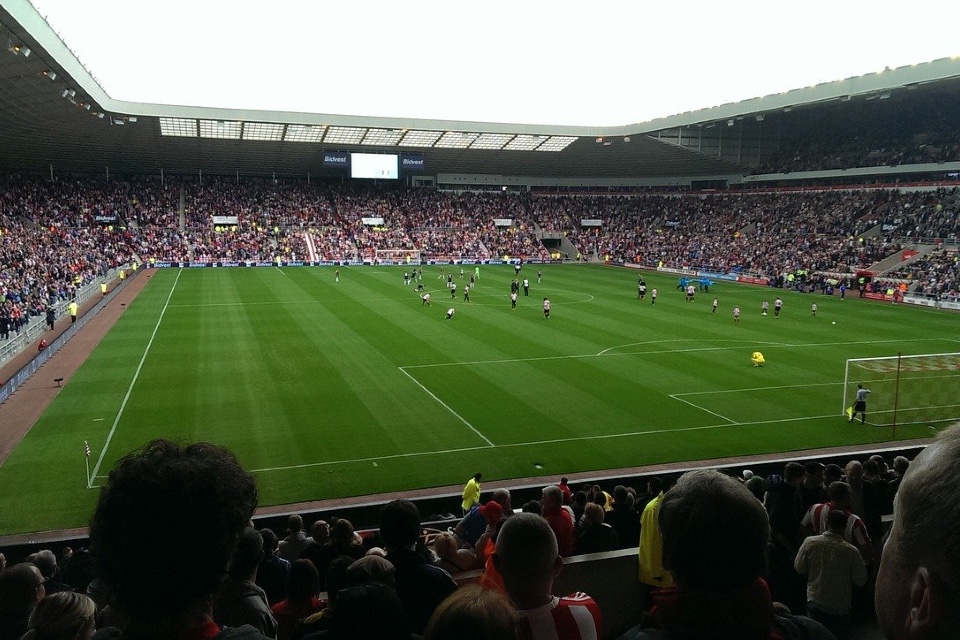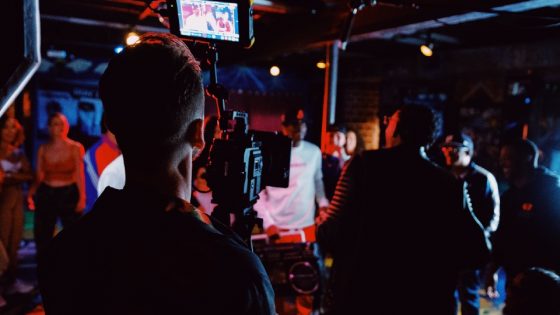With a growing number of iconic football teams switching to digital football programmes, print and design experts Solopress delve into football memorabilia and look at why items like printed programmes may have more staying power than you think…
COVID-19 had a significant impact on the world as we know it with the sports industry taking a severe hit in terms of ticket sales, with fans not permitted to attend games and get in on the action. Naturally, the restrictions also resulted in a decline in sales of match-day programmes, one of the most favoured forms of match-day memorabilia.
In light of this, the BBC’s recent article Are Paper Football Programmes on Their Way Out? debated the value of the printed programme over digital versions, but rightly points out that physical programmes are still in demand due to customers wanting something tangible to flick through, especially when the match is a ‘big historic occasion’.
With a rising number of clubs such as Blackburn Rovers, Bristol City and Derby County already making the switch to digital programmes to accommodate last-minute changes, brochure and programme printing experts Solopress look at why items like printed programmes may have more staying power than you think and reveal the future as to where programmes are likely to head.
Football Programmes Through the Years
Interestingly, the first football programmes in history were published roughly the same time as the launch of the Football League back in 1888, but they were originally used as scorecards. These early programmes were made up of a single sheet detailing the date, team names and player positions. One of the first clubs to publish a programme that celebrated club news was Aston Villa. Their iteration of the printed programme, the “Villa News and Record”, was in journal form, providing a different number and volume for each season.
Before World War I, the football programme had evolved into a more substantial print, providing fans with 4-8 pages of content. However, the paper shortage just before World War II meant fewer match programmes were produced. Post-war prints were also few and far between due to the devastating impacts of the war. This meant that programmes printed during this period are extremely rare and hold huge collector appeal.
A rise in popularity over later decades and the availability of more sophisticated printing methods led to programmes transforming into thick, glossy, full-coloured pages containing relevant club news, key statistics and a statement from the club manager. The quality of paper programmes in terms of both print and design has also improved significantly. This is because printing capabilities have progressed and the level of design expertise available has increased as new generations of graphic designers have emerged.
Bringing Programmes into the Digital Age
Today, due to the sales of match-day programmes falling during COVID-19, clubs were left with a surplus of unsold copies after games were postponed at short notice; thus, more and more clubs are taking their programmes online. Renowned clubs Blackburn Rovers, Bristol City and Swansea City are among the bigger clubs making to switch to digital programmes, with content including news, behind-the-scenes snapshots, features, exclusive interviews and a round-up of fixtures. Many of these programmes are also free of charge to fans, whilst allowing access to the same valuable content.
Whilst these programmes may offer the enticement of a digital archive, accessible at just the click of a button, there is no denying the sentimental value of having something physical in hand that serves as a souvenir and contributes to a memorable match day experience.
Although football programmes have changed massively from their humble beginnings, what has remained a constant throughout the years is the fans behind the programme and their desire to have a lasting physical representation of the memories made at their favourite matches. The enthusiasm of those that produce and sell the programmes remains a vital part of the match day experience.
The Rise of Football Fanzines
Football Fanzines are hardly new – the first football fanzine, Foul, was released in 1972, whilst fanzine The City Genthas been going strong since November 1984 – but their increasing popularity may give traditional printed programmes reason to re-evaluate their approach. Whilst official matchday programmes are a formal and professional affair, the fanzine acts as an antithesis to this, blending cheeky humour with on-the-nose commentary which is a perfect match for UK football culture. Whether it’s the Queens Park Rangers fanzine A Kick up the Rs or Scarborough Athletic FC’s Abandon Chip!, these unofficial publications often resonate with fans in ways that traditional programmes struggle to do, written by and for passionate football fans. Recent years have also seen the rise of supporter websites and online fanzine publications, which likewise offer up-to-date insights and stories. Whilst official printed publications still need to maintain a degree of professionalism as they represent their club, some programmes could do with taking a leaf out of the fanzines’ books and innovate more with the addition of humour, fun fan stories and lighthearted commentary or “did you know” facts about players to help maintain the attention of fans.
Why Print is Still Important
Solopress have been delivering high-quality printed materials since 1999 and have printed programmes throughout the football pyramid from professional clubs down to non-league clubs. Whilst they acknowledge that it’s time to evolve the beloved matchday staple into a new era, they maintain that the printed programme will remain important to fans for years to come due to its sentimental value and the impact it has on the overall match-day experience.
With 72% of consumers preferring to read printed versions of books and magazines, it’s easy to see the long-term value of the printed football programme, with it providing a single, reliable source of information for a match. Older age groups are also at risk of becoming alienated without the option of printed programmes, with over 75s highlighted as the age group least likely to use the internet and only 15 per cent of the nearly two million offline individuals having an interest in getting online at all.
Glen Eckett, Head of Marketing at Solopress shares: “Without printed programmes, you are clearly isolating some of your fan base, particularly the older demographic who may not be as tech-savvy.” Glen also raises the point that printed programmes help to take the match-day experience to new heights and add to the overall anticipation of the game; “People look forward to the anticipation of match day, right down to programme sellers greeting them in front of the stadium.”
“Going fully digital would diminish the overall match-day experience for a sizeable portion of the fanbase. A match is always special to someone and it’s important to consider those moments, like a grandfather taking his grandson to see his first match and wanting something to remember it by.”
Sentimentality & Souvenir Value
Whilst there is the obvious advantage of additional revenue for football clubs with the printed programme, one of the main things that we stand to lose by going online is the memories associated with physical copies. Glen upholds that the printed programme is something that is still treasured by many and has the power to inspire fans young and old. “Printed programmes can be the difference between young supporters remembering the game and going on to become lifelong supporters themselves or turning away from the game.”
He also explains that the sentimental value of printed programmes shouldn’t be underestimated: “The key advantages of the printed programme are the sentimentality and souvenir value that they hold. You’ll find that more people will purchase for big matches such as their first game and this is something I think will live on.”
Collectability
The collectable nature of physical programmes also makes them inherently valuable, especially to the “ground hopper” that makes a hobby of touring stadiums and collecting memorabilia. For the floating football fan market that exists today, not having the option of a printed programme could be a potential dealbreaker as it is fundamental to them and their overall experience of the game.
Many printed programmes have gone on to be hugely sought-after, with the oldest-known programme from the 1882 FA Cup final (Old Etonians vs Blackburn Rovers) being auctioned for a staggering £30,000 in 2013 and a single-sheet programme from the Manchester United versus Bristol City 1909 FA Cup final being sold for £23,500 in 2012. The first final programme from the old Wembley, dating back to 1923, is another hot commodity for collectors and is worth around £1,000. Similarly, the 1966 England vs West Germany programme is considered one of the most highly prized programmes in sport, demonstrating the rarity and unique appeal of printed programmes throughout the ages.
A Time for Innovation
Whilst the power of the printed football programme is undisputed given the sentimentality they hold for thousands of fans and their appeal for collectors, there is no avoiding the fact that to meet the demands of fans in the modern age, football clubs must innovate.
Although design and print innovation has come a long way since the production of the early programmes, the format of content has remained static, indicating that this is the area that should be transformed to create a more engaging experience for fans.
Glen identifies an opportunity for innovation in relation to printed football programmes and shares his views on the direction that should be taken. “Today, fans have a vast amount of information at their fingertips, whereas previously the programme would be their sole source of information. A lot of people that have purchased a football programme will likely have a phone in their hand at the same time scrolling through football news, therefore, it is time to reimagine what football programmes can be with offline and online working together.”
“Whilst clubs need to rethink the format of the printed programme, they don’t need to be a thing of the past. Programmes have the potential to form an integral part of football’s future, but it’s about seeing how print and digital can work in tandem to bring something new to the table.”
Are We Headed Towards Hybrid Football Programmes?
The prospect of “hybrid” football programmes that combine print and digital could lead to a range of exciting possibilities for clubs to creatively engage with their fans, from QR codes that lead to additional content to augmented reality (AR) and gamification elements linked to the printed programme.
There is evidence to suggest that this marriage of print and digital could be on the horizon, with Queens Park Rangers launching the first English AR match day programme that did not require an app in 2021. Fans were instructed to scan the QR code on the programme or on posters around the stadium to access exclusive content.
Similarly, Arsenal FC utilised AR technology to create a unique programme that enabled fans to select their squad for the match ahead, Captain’s Notes from a virtual Pierre-Emerick Aubameyang, player profiles, quick-fire interviews and exclusive training ground footage. The innovative programme was developed to allow fans to recreate the match day experience in their homes during the COVID-19 pandemic.
With the creativity and innovation being exhibited by some major clubs today, it is easy to envision a future where printed programmes can work in sync with digital content to deliver a brand-new matchday experience to loyal supporters. Glen concludes, “The more clubs that take this step forward, the more that others will see the virtues of it. I think it’s going to be vital for football clubs to innovate and bring the printed programme into the future.”
“There is a definite long-term future for the printed programme in the case of non-league games that have more traditional values, especially since non-league football attendances skyrocketed since COVID-19 when people were unable to access professional stadiums. Regardless of league or football club, it is such a fundamental part of the game and we believe in the ability for the football programme to evolve.”




